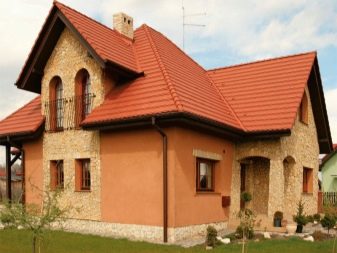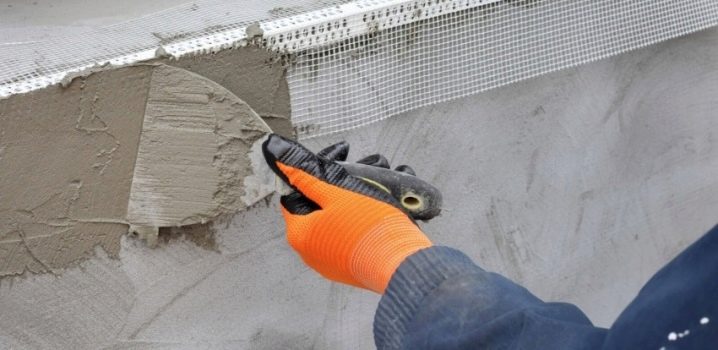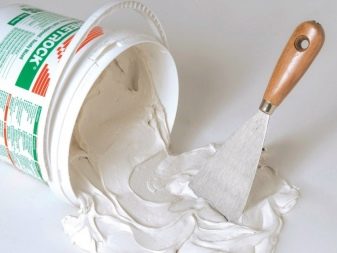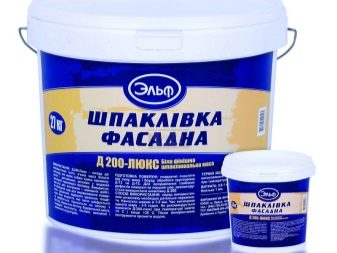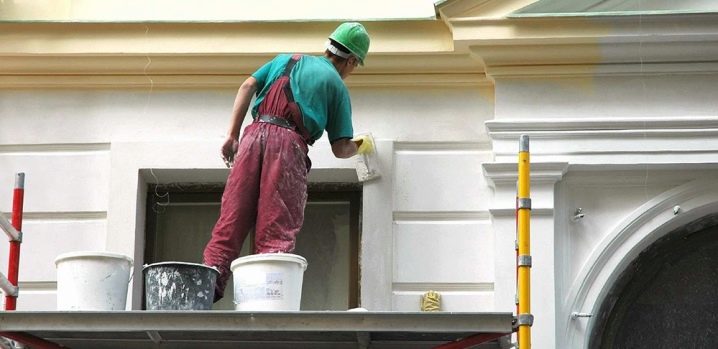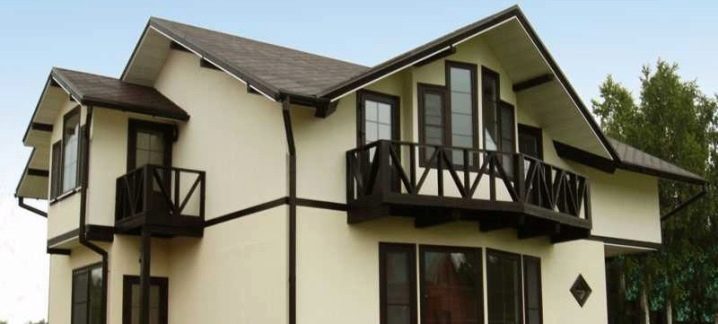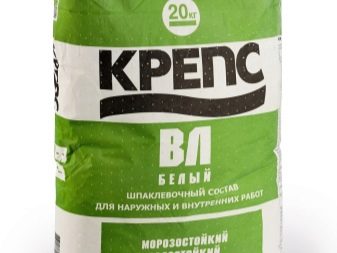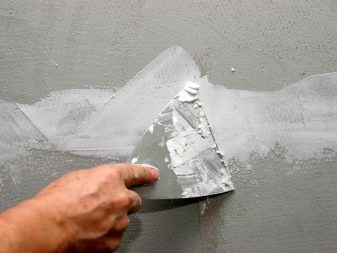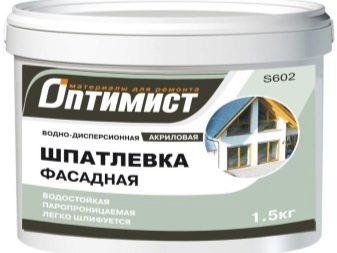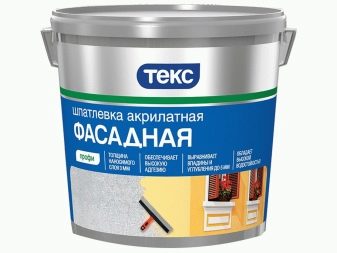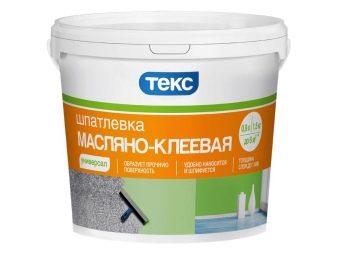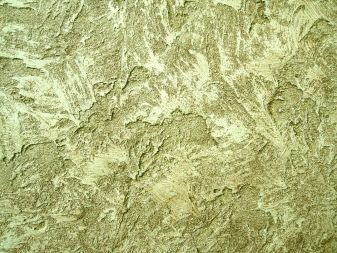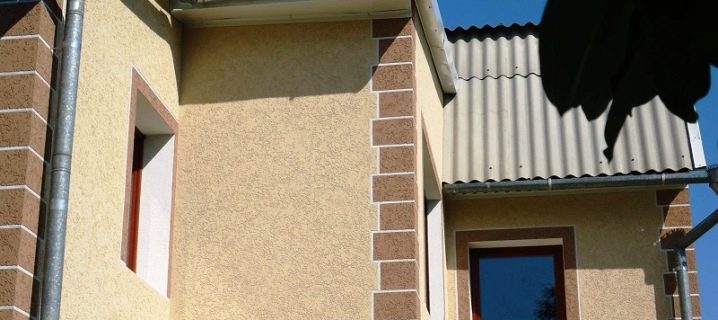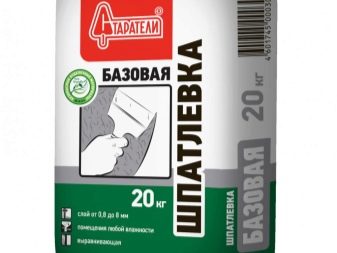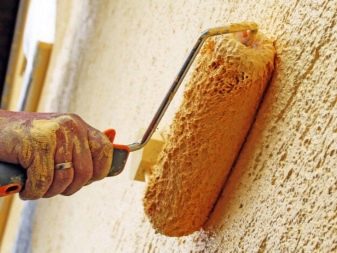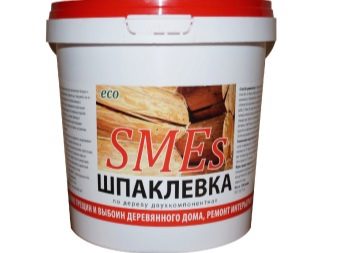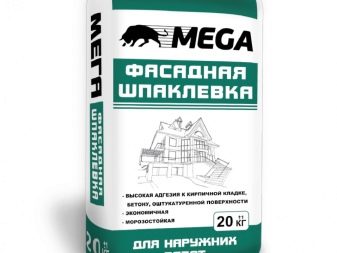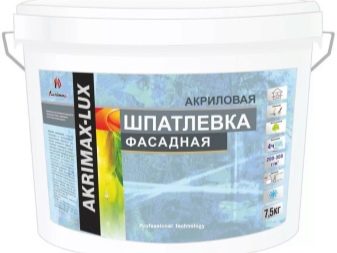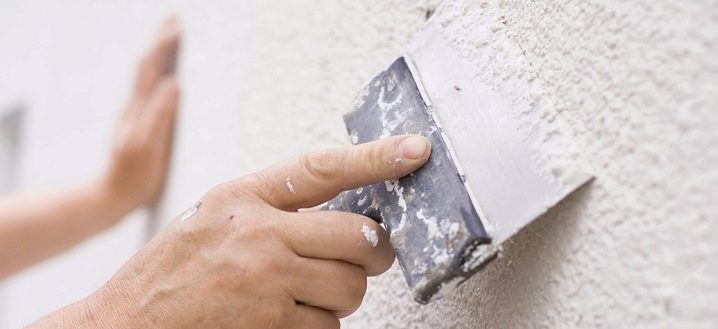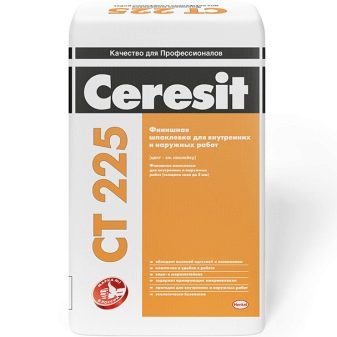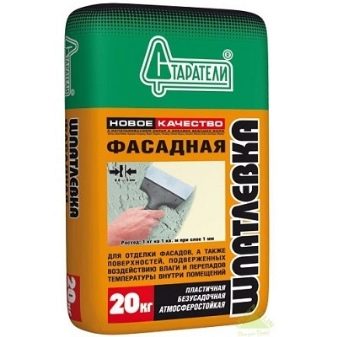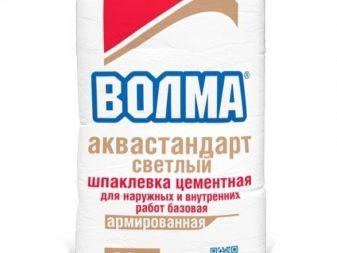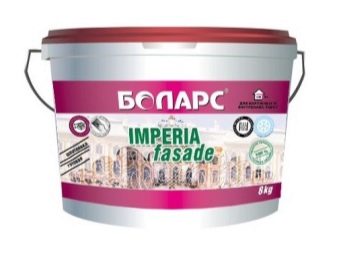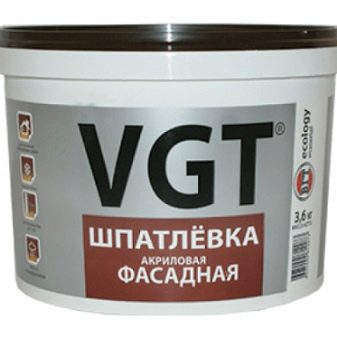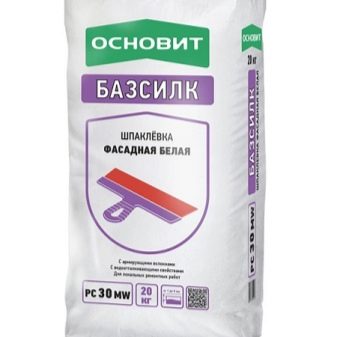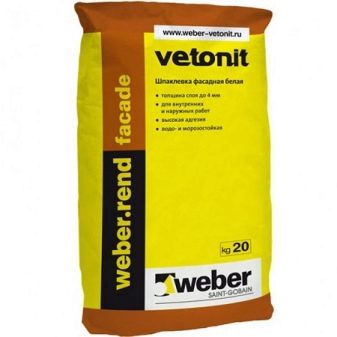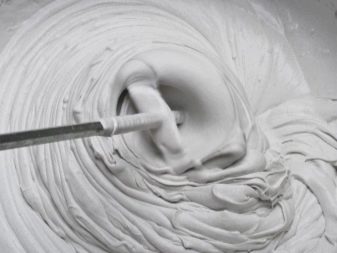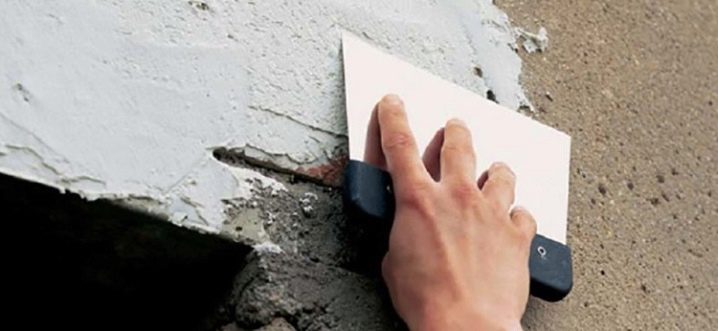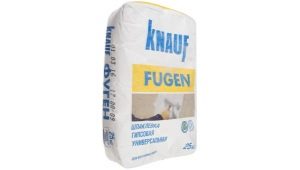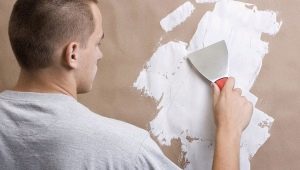Facade putties: types and characteristics
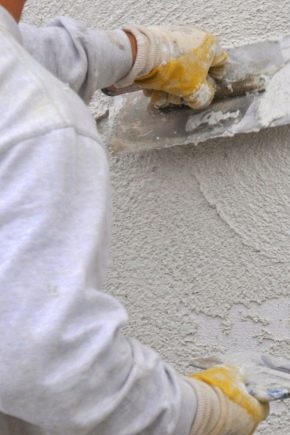
For finishing of internal and external walls use various construction materials. Facade putty is used for processing, design and restoration of buildings. This finishing mixture helps to prepare a rough substrate for the application of a decorative layer.
Special features
Leveling mortars for walls are called differently: someone says "putty", others call "putty." The notion of putty comes from a spatula tool, which is applied leveling solution. The putty originates from the German language, translated as "paddle". These two concepts unite one term - a mixture that serves to finish the surface.
For exterior work apply a special facade putty, which is distinguished by its strength characteristics of the compositions for interior decoration.
To putty for the facade the following requirements:
- it must have good adhesion with different building materials;
- easy to resist on a dry surface;
- be able to apply at low temperature;
- after curing should have high strength characteristics;
- resistance to ultraviolet exposure;
- resistance to precipitation;
- must form a wear resistant coating resistant to contamination;
- the ability to tolerate temperature extremes;
- after drying, no cracks should be formed;
- the composition should not contain harmful and toxic substances;
- the finished layer must be compatible with any paintwork material;
- the solution should be plastic and convenient for distribution to the working area.
Facade plaster, designed to finish the external elements, performs protective, leveling, strengthening and decorative functions.
The following technical features are typical for puttying:
- the thickness of the layer that is applied at one time;
- time of final drying of each layer;
- mixture consumption per 1 square. m;
- operation at negative temperatures;
- multicomponent or complex compositions.
Kinds
Putting materials are divided into types on several grounds.
The composition of the following types of putties:
- cement - the main component is cement and sand, and as additives, reinforcing fibers, gypsum, marble powder are used;
- acrylic - based on acrylic polymer;
- acrylate - contains acrylic and latex;
- oily - in a multi-component composition includes linseed oil, glue, acrylates, chalk;
- silicate - has a basis from silicate liquid glass;
- silicone - The main component is silicone.
The most common composition is cement, as it has an affordable price and adequate quality. Cement-based putty is applied to all types of mineral surfaces: concrete, plaster, lime, gypsum and brick.
This composition has the following positive qualities:
- frost resistance - maintains more than 100 freezing cycles, is operated at low temperatures from -60 degrees;
- strength and wear resistance;
- fire resistance, refers to non-combustible materials;
- water resistance - resistant to precipitation;
- environmental Safety - contains natural mineral supplements;
- good covering power - it is capable to seal up defects of the basis to 1,5 cm.
The disadvantages of the composition include the ability to crack, as well as the fact that when the evaporation of moisture material shrinks.
Acrylic compounds are waterproof, do not form cracks. Create a durable elastic layer that can be further processed. Acrylic based fillers are suitable only for finishing with a layer up to 50 mmThey are not able to fill deep irregularities due to their finely dispersed structure. When sanding, protection for respiratory organs is needed, as the composition is very dusty.
Adding latex to the acrylate putty gives enhanced moisture-proof properties, ductility and durability. It is easy to apply, does not require pre-mixing with water. But the price of such a product is significantly higher than the cement composition.
Oil putty is used to align the wooden facade elements. It has its own characteristics in the application, which limits its use. Oil putty layer must be protected with oil paint, because the components do not tolerate high humidity.Spackle a thin layer of up to 2 mm with repeated repetition, which gives strength.
Silicate compounds fit well on aerated concrete, foam concrete, shell rock. Strict adherence to the application technology creates a vapor-permeable protective layer. Applied as a decorative finish.
When using silicone-based filler, a strong vapor-permeable protection is formed. Silicone layer repels dirt. There is the possibility of tinting in different colors, while the composition will be the final decorative layer on the facade. Restriction in use is the high cost of the material.
Winter facade putty can be based on cement or acrylic with the addition of chemical components that improve the hardening at low temperatures. This is additionally indicated by the manufacturer on the packaging; prices for such compositions are higher.
By purpose, the facade plaster is divided into the following types:
- Basic. The granular structure is intended for leveling and restoration of facades with cracks and potholes up to 150 mm.
- Finish line. Liquid fine structure serves for finishing with a layer up to 0.4 cm.
- Decorative. With its help give various textural effects. For the facade is applied texture plaster.
- Compositions for wood. For wooden structures, the indicator of vapor permeability is important, so that the outer layer of putty does not delay the release of water vapor.
Depending on the readiness of putty, there are two types of products: dry mix and ready-made composition. Dry putty has the appearance of a powder that requires pre-mixing with water to a certain consistency. After mixing, the components of the mixture react, ripening occurs, then you can begin to putty. Available in bags from 5 to 30 kg.
Ready putty is a fully prepared product suitable for direct use on the surface. It only needs stirring the mixture until smooth.. They produce ready-made polymer compositions, which are poured into buckets from 2.5 kg.
Manufacturers
Such domestic brands of putty mixtures are widely known:
- Ceresit;
- "Miners";
- Volma;
- "Bolars";
- VGT;
- "Founded 30".
The Ceresit construction brand belongs to the oldest German concern Henkel, which has located its plants in Russia.To finish the facade of mineral materials, the plant produces Ceresit CT 225 cement putty. Applied in a durable thin layer of up to 3 mm in white or gray, comes in 25 kg bags.
The company "miners" specializes in the production of dry mixes for construction and finishing works. In the line there are 3 types of cement putty for exterior work: front white, front gray and front-finish.
Front putty can be applied a layer up to 1 cm, finishing - up to 3 mm. The mixture is produced in packages of 5 kg and bags of 20 kg. Differs in reasonable price and acceptable quality on the German technologies.
Domestic manufacturer Volma produces dry facade putty based on Portland cement. "Volma Aquastandard" and "Volma Aquastandard Light" with reinforced fibers allow you to make the leveling layer up to 1 cm. Sold in bags of 22 kg.
The plant of the company "Bolars" is engaged in the production of three types of dry products for putty exterior walls. These include facade, facade-finishing and leveling products. Suitable for leveling up to 1 cm of plasterboard, aerated concrete, brick and concrete surfaces. Packed in 5 kg, 20 kg and 25 kg.Also, "Bolars" produces ready-made polymer putty "Empire facade" for painting, comes in 8 or 28 kg buckets.
LLC VGT Enterprise produces finished facade acrylic compounds of the brand Bau master Shelton and VGT. The universality of the putty allows you to apply it on different types of surfaces with a layer up to 7 mm. It is characterized by a short setting time - 8 hours. Available in buckets of 3.6 kg, 7.5 kg and 18 kg, as well as in barrels of 50 kg each.
Under the brand "Osnovit" is produced facade putty "Found the Baszilk PC 30 MG" based on cement. It is released in bags of 20 kg of white and gray. It has water-repellent properties with reinforced additives.
Popular foreign manufacturers of facade finishing materials are the German concern Knauf and the European brand Weber Vetonit. Knauf facade putties are made on a cement base. Knauf Multi-Finish is designed for the finishing of exterior walls with a layer up to 5 mm. A plus when using is low consumption per 1 sq. M. m. Has good adhesion to plastered surfaces.
Cement and acrylic putty Vetonit - high-quality composition for alignment of the facade with a layer thickness of 0.5 cm.The range of "Vetonita" includes a large selection of decorative texture mixtures for the facade.
Tips for choosing
The main rule when choosing a facade putty - base evaluation. The quality of the working surface will depend on the composition of the putty mixture. For uneven walls and seal cracks of more than 5 mm, cement based putty will work. It consists of granular grains of sand, so the composition is able to fill gaps, hollows and pits up to 1 cm. The finished acrylic compositions are elastic and penetrate into the smallest pores, forming a smooth and even surface.
The type of filler depends on the base material, since different compositions have different degrees of adhesion. When buying, pay attention to what type of surface the putty mixture is intended for.. Cement and acrylic compositions are intended for brick, concrete, plaster, gypsum, aerated concrete. Oil-adhesive and acryl fillers are suitable for wood and wood-based panels.
Resistance to cracking is an important feature for facade mixtures. This must be considered when purchasing. It is also worth getting acquainted with the characteristics of the composition. It is necessary to take into account the drying time of the finished layer: acrylate putty dries faster - up to 8 hours, cement formulations are ready for further processing in 24–72 hours.
Cement-based spackling compounds are available in gray, beige or white. In order not to distort the shade of paints, white putty is chosen for painting. It is even better to apply the pasty formulations of white color..
The instructions should indicate the possibility of coloring the finished coating. When choosing, you can consider the possibility of changing the color of the putty mixture by adding color or pigment.
Frost-resistant weather-resistant compounds acquire their properties while maintaining the temperature during the finishing works. Almost all putties are applied at temperatures from +5 to +20 degrees. Cement compositions freeze faster at a temperature of +25 degrees. A mixture of polymer-based can be operated at a temperature of from +5 to +35 degrees.
In sunny weather can not be putty - on the work surface should not fall the sun's rays. Do not carry out finishing work in the rain, since the diluted composition is negatively affected by an increase in humidity above 80%.
Depending on the amount of putty work, select the desired packaging of products.The weight of the mixture is calculated from the surface area and the maximum rate of consumption per 1 sq. Km. m for a specific putty. An approximate thickness of the layer needed for leveling is added to the weight. The package shows the approximate consumption of the mixture for different base materials.
If the putty work will be done by non-professionals, then you need to pay attention to the rate of solidification of the composition. More plasticity time of the diluted mixture will allow to putty longer. On average, the application of cooked putty - 1-3 hours.
How to putty a facade with your own hands, see the next video.

